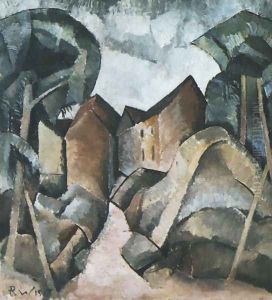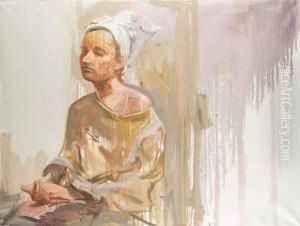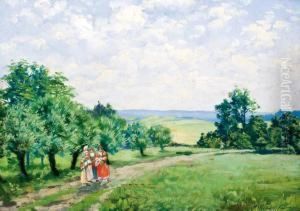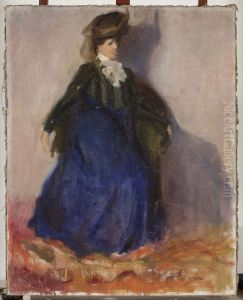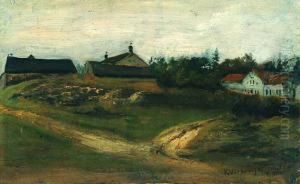Romuald Kamil Witkowski Paintings
Romuald Kamil Witkowski was a Polish painter, born on August 8, 1876, in Warsaw, then part of the Russian Empire, now the capital of Poland. His artistic journey began at a young age, and he was particularly known for his portraits, landscapes, and cityscape paintings, capturing the essence of Polish culture, heritage, and the natural beauty of his homeland. Witkowski's works are characterized by their vibrant colors, meticulous attention to detail, and the emotional depth they convey, making him a significant figure in Polish art history.
Witkowski's education in art started at the Warsaw School of Drawing, followed by further studies at the Academy of Fine Arts in Kraków, where he was under the tutelage of some of the most prominent Polish artists of the time, including Leon Wyczółkowski and Jan Stanisławski. His artistic style was influenced by the broader European movements of the late 19th and early 20th centuries, yet he retained a distinctively Polish sensibility in his work. After completing his studies, Witkowski traveled extensively, drawing inspiration from various European cultures and landscapes, which would later be reflected in the diversity of subjects in his paintings.
Throughout his career, Witkowski participated in numerous exhibitions, both in Poland and abroad, earning recognition and accolades for his contributions to the art world. His works were appreciated not only for their aesthetic qualities but also for their ability to evoke a sense of nostalgia and national pride among the Polish people, especially during periods of political turmoil and foreign occupation.
Despite the challenges posed by the two World Wars and the changing political landscape in Poland throughout the first half of the 20th century, Witkowski remained dedicated to his art. He continued to paint and exhibit his work until his death on July 30, 1950, in Poznań, Poland. Today, Romuald Kamil Witkowski's paintings are housed in various museums and private collections, both in Poland and internationally, serving as a testament to his enduring legacy as one of Poland's cherished artists.
